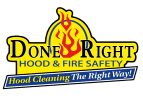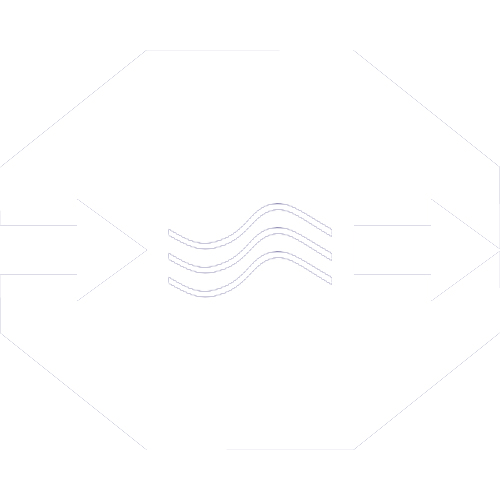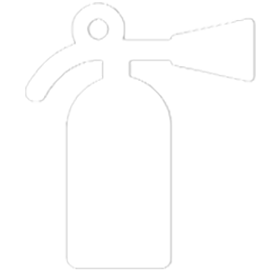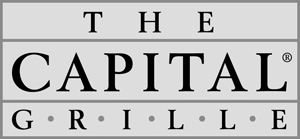Let’s dive straight into the heart of kitchen maintenance: the best way to clean a grease trap. This isn’t just about keeping your kitchen smelling fresh; it’s about ensuring everything runs smoothly, avoiding costly clogs, and staying compliant with regulations. From understanding how these traps work to preventing backups, we’ll cover all you need to know. You’ll learn step-by-step methods for effectively removing fats, oils, and greases—yes, even those stubborn bits that cling to the sides. Plus, discover why regular maintenance is not just good practice but essential for optimal performance. And if DIY isn’t cutting it? Additionally, we’ll guide you on choosing the right experts for the job if going it alone doesn’t quite meet your needs.
Table Of Contents:
- The Mechanics Behind Grease Traps
- Step-by-Step Guide to Cleaning Your Grease Trap
- Regular Maintenance Schedule for Optimal Performance
- Troubleshooting Common Grease Trap Issues
- Selecting Professional Grease Trap Cleaning Services
- DIY vs. Professional Grease Trap Maintenance
- Enhancing Kitchen Efficiency with Proper Grease Management
- Wrapping Up
The Mechanics Behind Grease Traps
Grease traps are crucial in commercial kitchens, acting as guardians that keep fats, oils, and grease (collectively known as FOG) from wreaking havoc on plumbing systems. By capturing these materials upfront, they prevent them from advancing into the sewer lines. This process is vital because when FOG cools down, it solidifies and can cause severe blockages.
These devices require grease traps to function correctly; without them, clogs would be inevitable. The concept behind trap grease is simple yet effective: wastewater flows through the trap where food particles settle at the bottom while lighter oil floats to the top. This separation ensures clean water exits into sewage lines.
Step-by-Step Guide to Cleaning Your Grease Trap
Preparing for Cleaning
Before you start cleaning, make sure you have the right gear. You’ll need protective clothing and rubber gloves to keep yourself safe from the mess. Ensuring your well-being goes beyond mere appearances; it involves equipping yourself with the necessary protective attire.
Gather your cleaning tools too. A shop vacuum, steel pot scrubber, and dish soap are essentials. Warm water will also be your best friend during this process.
Removing FOG with a Shop Vacuum
To kick things off, carefully remove the grease trap lid using a crowbar or wrench—whichever fits better. Then bring in the shop vac to suck out all fats, oils, and greases (FOG). This is where things get fun if you consider removing gooey substances fun.
Avoid letting any food solids sneak past by keeping an eye on what gets sucked up. Remember: we’re aiming for clean water running smoothly through our kitchen sink again.
Scrubbing Components Clean
After vacuuming comes the elbow grease part—literally. Use that steel pot scrubber and some dish soap mixed with warm water to scrub every nook and cranny of your trap tank clean.
Rinse everything thoroughly afterwards because leaving residue behind would defeat the purpose of all this hard work. Testing drainage at the end ensures that we’ve done our job well—and who doesn’t love a bit of validation?
Regular Maintenance Schedule for Optimal Performance
Regular upkeep of your grease interceptor is not merely advisable; it’s essential to avert blockages and ensure seamless operations. Imagine this: your kitchen is the heart of your restaurant, and the grease trap is its arteries. Just like clogged arteries can cause problems in the body, a backed-up grease trap can spell disaster for your business.
A regular cleaning schedule ensures that fats, oils, and greases don’t get a chance to build up. Experts recommend inspecting traps monthly. When you find that grease levels hit 25% of the effective depth or every three months—whichever comes first—it’s time to call in licensed septage haulers.
Adhering to this schedule not only ensures a steady flow of water but also sidesteps potential penalties for failing to meet regulatory standards. Plus, clean traps mean no nasty odors turning guests away at the door.
Troubleshooting Common Grease Trap Issues
Dealing with a grease trap that’s not running smoothly can be a real headache. If you’ve noticed clogs or offensive odors, it might be time to roll up your sleeves and tackle some common issues.
Clogs often happen when fats, oils, and grease (FOG) solidify inside the trap. This prevents water from flowing freely. The solution? Regular cleaning is key to removing FOG before it becomes a problem. Also, ensure only sink drain waste enters your grease trap; everything else should stay out.
Offensive odors are usually due to food particles decomposing in the trap. To fix this, clean your grease trap more frequently and thoroughly remove all solids during each cleaning session.
Selecting Professional Grease Trap Cleaning Services
Finding the right expert grease trap cleaning service is like hiring a superhero for your kitchen’s plumbing system. Done Right Hood & Fire Safety stands out as a reputable choice, known for their precision and reliability in keeping commercial kitchens running smoothly.
Opting for professional services ensures that all fats, oils, and greases (FOG) are thoroughly removed from your traps. This prevents them from entering sewer systems and causing major blockages. Experts adeptly eliminate stubborn grease, ensuring your business runs smoothly without any hitches.
They’re not only experts in clearing the obvious mess, but also in ensuring your whole waste management system runs smoothly. Trust experts to keep everything under control.
DIY vs. Professional Grease Trap Maintenance
Choosing between DIY and professional grease trap maintenance involves weighing the pros and cons of manual labor versus expert services. On one hand, handling grease trap cleaning in-house can save money initially but may not address all issues effectively. Mastering the art of grease trap upkeep demands proficiency in hands-on cleansing, adept management of refuse elimination, and unwavering commitment to a routine maintenance timetable.
On the other hand, hiring professionals ensures your system runs smoothly with less hassle on your part. Experts in commercial grease trap cleaning bring experience that guarantees thorough removal of fats, oils, and greases (FOG), preventing clogs and odors efficiently. Their knowledge extends to dealing with unexpected problems which might stump even seasoned DIY enthusiasts.
Enhancing Kitchen Efficiency with Proper Grease Management
Kitchens, especially in commercial settings, face a constant battle against fats, oils, and grease (FOG). These substances can wreak havoc on plumbing systems if not managed properly. Grease interceptors step in as crucial defenders, capturing fats, oils, and grease before they can invade the sewer lines. Grease traps play a pivotal role in snagging fats, oils, and grease (FOG) to prevent them from slipping into the sewer lines.
Keeping your grease trap tidy is not merely about keeping a spotless kitchen; it’s fundamentally important for ensuring everything in the kitchen operates without a hitch. When grease traps get jammed, it slows down the water flow and can even cause a total stoppage, throwing a wrench into the daily rhythm of kitchen activities. Ensuring your grease trap is cleaned routinely aids in the unhindered flow of water, facilitating seamless kitchen activities.
Maintaining your grease trap involves inspecting it monthly and getting it cleaned by licensed professionals at least every three months or whenever the level of grease reaches 25% of its depth. Adopting this practice safeguards against clogs while ensuring your cooking space remains up to code.
Wrapping Up
The best way to clean a grease trap? It’s about more than just scrubbing; it’s ensuring your kitchen keeps humming without hiccups.
Initiate by comprehending the mechanics and significance of these setups, laying the groundwork for effective maintenance. This understanding is crucial for tackling fats, oils, and greases head-on—preventing those dreaded clogs and staying within the law.
Dive into regular check-ups with determination. Maintaining a strict regimen for cleanliness guarantees not only seamless functionality but also minimizes unexpected setbacks as time progresses.
And when DIY meets its limits? Knowing when to call in pros can save your day—and your drain.
In all this, remember: Consistency is key. With each step taken today, you’re paving the way for a cleaner tomorrow.
















